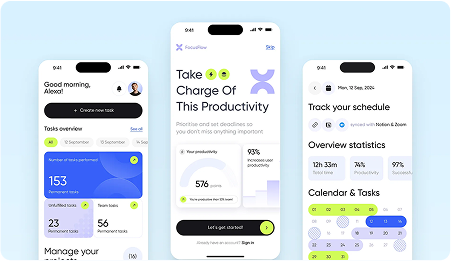
Building a Game from Scratch: Top 10 Practices You Definitely Need
So, you wanna build a game? That’s cool. But let’s be real. It is gonna be a wild ride. However, it’s worth that much chaos. Why? Because it’s FUN! So, wanna make that next viral mobile hit, or just doing things for fun? Either way, you gotta know the game design and development process.
Thank you for reading this post, don't forget to subscribe!
Lucky for you, we got the Top 10 Practices. They’ll make your game-building journey smooth (well, smoother). No boring stuff, just straight-up tips that work for everyone. Let’s go!
1. Pick the Best Game Engine for Beginners
Table Of Content
So, you’re diving into game development? That’s awesome! However, are you a newbie? Then, you don’t want to get tangled up in bad coding nightmares. Trust us! It’s not fun. Therefore, we’d recommend starting with a beginner-friendly game engine. For instance, you can hit it with
- Unity
- Unreal Engine
These are fantastic choices. Specifically, they offer cool drag-and-drop features. That makes building game elements easy. Furthermore, they have tons of helpful tutorials. They guide you through the process. Also, and this is a big plus, they boast a massive and supportive community.
So, if you get stuck, there are tons of people ready to lend a hand and share their skills. Moreover, these engines often have pre-made assets you can use. Hence, that saves you time and effort. Ultimately, choosing the right engine can make or break your game development journey.
Pro Tip: Want something beginner-friendly? Try Godot or Construct 3. They’re easier to use and great for 2D games!
2. Plan Before You Code
We know, we know, planning sounds boring. But hear us out! If you dive headfirst into game development without a solid plan, uh oh! Your game idea could quickly become a tangled mess. Therefore, take some time to flesh out your vision. For instance,
- Sketch out your game’s core concept
- Design your characters
- Give them personalities and backstories
- map out the levels
Also, think about the challenges players will face. And how are they gonna navigate the game? Moreover, consider the overall feel and atmosphere you’re tryna create. A little planning goes a long way. And yes, it will save you a ton of blunders in the future.
Pro Tip: Use tools like Trello or Miro to organize your ideas visually!
3. Know Game Engine Architecture
Thirdly, now is the time for your game engine to be the mighty brain behind your entire game. It’s the central command center. It handles every single element you see and experience. So, it’s responsible, controlling everything like the
- stunning visuals
- realistic physics
- immersive sounds
- engaging gameplay
Furthermore, knowing some basic concepts about
- How a game engine is structured
- its architecture
This can be incredibly beneficial. For instance, this empowers you to troubleshoot tech issues and squash those pesky bugs. Ones that inevitably pop up during development. Additionally, a solid grasp of game engine architecture allows you to optimize your game’s performance. And that ensures it runs smoothly. Cool! Therefore, by knowing how the engine works, you can
- fine-tune its settings
- Make informed decisions about your game’s design
- Lead a more polished and enjoyable player experience
In short, learning about game engine architecture is like getting a backstage pass. And that gives you the power to create something truly special.

4. Keep Your Game Simple (At First)
Next, are you just starting out designing video games? Well, it’s fun. Very tempting to jump right into creating this huge game with a massive world and tons of characters, right? Oh! However, that’s a common pitfall for new devs. Instead, a smarter approach is to begin with something small. For instance, you could try building a simple platformer game. Here, your character runs and jumps through a level. Alternatively, puzzle games are another excellent starting point. These kinds of games let you focus on core game mechanics like
- Movement
- Controls
- level design
All without getting overwhelmed by the complexity of a giant RPG. Furthermore, by starting small, you’ll learn essential skills in
- Programming
- Art
- Game design
Consequently, successfully built a few of these smaller games? Wanna understand the fundamentals? Now, you are equipped to tackle those bigger projects. The best art? You’ll have a solid base to build upon. So, take your time, learn the tables, and gradually work your way up in the game design and development process.
Pro Tip: The best way to learn is by making a clone. It can be a simple game (like Flappy Bird or Pong). Then, add your twist!
5. Work with Game App Designers
Does your game look ugly? Uh oh! Then, nobody’s gonna play it. Sorry, but it’s true. No one wants to play a game that’s not pretty. Now, you might be thinking, “I’m not a designer. “Gosh, I’m doomed.” Nah huh! Don’t worry! Even if you don’t have artistic skills, you can team up with talented game app designers.
They can turn your game from something blimey into a polished product. Therefore, teaming up with a designer is a smart move. Furthermore, remember that attractive visuals are like a magnet for players. Okay! Also, a well-designed game is more likely to grab attention in the crowded app market.
Pair that up with good visuals. They translate to more downloads. Hence, all of this ultimately means more success for your game. Hiring designers isn’t just about aesthetics. It’s a strategic move to boost your game’s popularity and profitability.
Pro Tip: Can’t afford a designer? Use free assets from websites like Open Game Art or Itch.io!
6. Playtest Like Crazy
You think your game is flawless? Think again! Every single game, no matter how awesome you think it is. It has bugs and weird glitches. Therefore, you have to test it over and over and over again. It’s a crucial step. Then, get your friends to play it. And, importantly, watch closely to see where they struggle. This is valuable feedback. Furthermore, you might even want to watch people who aren’t your friends play it.
Sometimes, fresh eyes catch things your friends might miss. Why so? Because they’re used to your playing style. Additionally, don’t just focus on the big, obvious problems. Sometimes, the tiny little things. Like a character’s foot clipping through the floor. Or a weird flicker in the background. They all can be just as annoying and immersion-breaking for players. So, yes, thorough testing is essential.
Pro Tip: Watching other people play your game will show you things you never noticed. Trust me.
7. Choose the Right Game Development Company (If You Need Help)
Making a truly top-notch game is a big undertaking. No, it’s not just about having a cool idea. It takes a lot of hard work. Pair that up with a load of skills. Therefore, are you serious about crafting a high-quality game, one that players will love? Then, sometimes, it’s a smart move to get some help. Partnering with a game development company can be a game-changer (pun intended!).
For instance, they are experts in all aspects of game creation. Firstly, they can handle the complex coding that brings your game to life. Also, they have talented designers. So they can create visually stunning worlds. Not to forget the engaging gameplay. Furthermore, they can even help you with the marketing side of things. They ensure your game reaches its target audience.
What’s more? They offer valuable feedback and insights throughout the development process. So, yeah, hiring a game development company can free you up. Hence, you can focus on your creative vision. Meanwhile, they take care of technical and logistical details.
Pro Tip: So, are you working solo? Then, join online game dev communities. You can find free advice, tutorials, and even team members!

8. Sound & Music Matter More Than You Think
A game without good sound? That’s like a pizza without cheese. It just feels… wrong. Imagine you’re playing at an intense level. But suddenly, there’s no dramatic music. Ugh! That kills the mood, right? Similarly, imagine a platformer where you jump. However, there’s no boing sound. It just doesn’t feel as satisfying. Therefore, background music, sound effects, and even silence in the right moments make your game way more fun. For instance, a creepy game with eerie silence. But punctuated by a sudden scream. That’s way scarier than one with constant noise.
Moreover, good sound design can make a game interesting. You feel like you’re IN there. Plus, it can give you crucial clues. Huh? Maybe you hear a faint rustling sound. Well, that tells you an enemy is nearby. So, yeah, sound is important. Especially to make the perfect gaming experience.
It’s one of those things that can make or break a game. The next time you’re playing a game, pay attention to the sound. You might be surprised at how much it adds to the fun.
Pro Tip: Use free sound libraries like Freesound.org or hire a musician from Fiverr if you want something original.
9. Optimize Your Game for Different Devices
It’s visually stunning on your powerful computer. Paired with all the bells and whistles. However, most people will probably play it on their phones or tablets. So, the big question is, does your game perform well on mobile devices? Does your game lag? It stutters? Or freezes constantly? Bad news! Folks will get frustrated very quickly. The worst? They might delete your game within seconds and move on to something else.
Therefore, it’s crucial to ensure your game runs smoothly. On any device! Hence, you should test your game on different screen sizes and operating systems. Why so? For instance, a game that works perfectly on a high-end phone might struggle on an older model. Also, consider optimising your game’s performance. That, too, for lower-end devices. In other words, you might need to adjust the graphics settings or reduce the number of complex calculations.
Pro Tip: Test your game on old devices, too, not just the latest ones. Not everyone has an iPhone 15.
10. Keep Learning & Have Fun!
Lastly, game development is a real adventure. And yes, you’re gonna make mistakes. That, too, a whole bunch of them! It’s practically guaranteed. But guess what? That’s perfectly fine! It’s a normal part of the process. The most successful game devs know this. That’s why they
- Never stop learning new things
- constantly seeking out fresh know-how and tricks
Also, they’re always
- trying out different ideas
- trying out new approaches
- pushing the boundaries of what’s possible
Moreover, and perhaps most importantly, they remember to have fun! After all, game development should be enjoyable. It’s a creative outlet more like a chance to build something amazing. But you’re still not having a good time? Then, something’s not right.
Pro Tip: Watch YouTube tutorials, join game dev forums, and never stop improving!
Summing It Up!
In short, you need a solid plan first. Then, break that plan down into smaller, manageable steps. Next, think about the core gameplay. So, what makes your game fun? Huh? After that, start sketching some ideas for your characters and their world. Don’t forget the story! Basically, a good story can draw players in.
Additionally, consider the visuals. Like what kind of style are you going for? Plus, remember the sound effects and music. Gosh, they add so much to the atmosphere. Finally, don’t be afraid to ask for feedback from friends and family. So, what are you waiting for?
Building a game from scratch isn’t easy, but it’s worth it. Just follow these 10 tips, and you’ll be on your way to making something awesome.
Now, stop reading and start building!
Frequently Asked Questions
The easiest game engine for beginners is
- Godot
- Unity
- Construct 3
Godot is free and beginner-friendly. Meanwhile, Unity has tons of tutorials. And Construct 3 lets you build games with little to no coding!
The game design and development process follows these steps:
- Plan Your Game – Story, mechanics, characters.
- Choose a Game Engine – Pick one that fits your skill level.
- Design Graphics & Sounds – Create or use free assets.
- Start Coding & Building – Develop game mechanics.
- Test & Debug – Fix bugs and optimize performance.
- Publish & Market – Launch on app stores or PC platforms.
You can make money by:
- In-app purchases (skins, power-ups)
- Ads (banner, interstitial, rewarded ads)
- Premium version (charge upfront for the game)
- Sponsorships & Crowdfunding (Kickstarter, Patreon)
- Sell your game to a game development company
- Best game engine for beginners
- game app designers
- Game design and development process
- Game Development Company
- game engine architecture
Table Of Content






